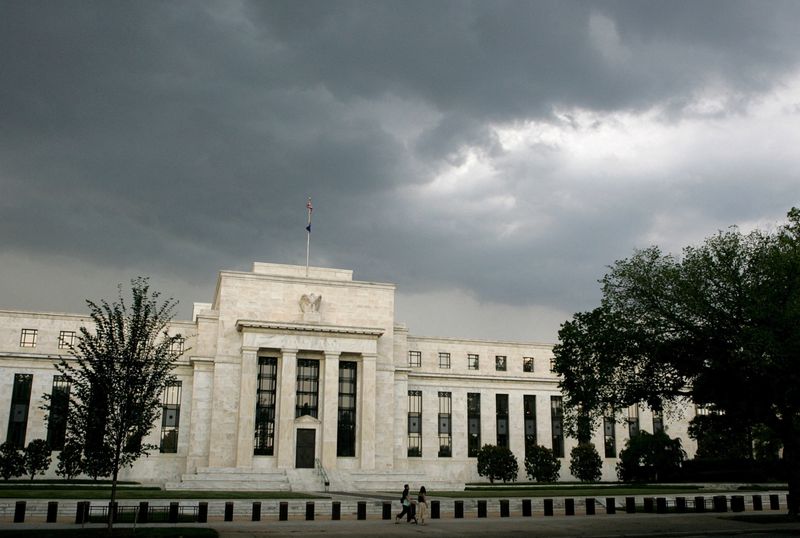
©Reuters. FILE PHOTO: Early summer storm clouds gather over the U.S. Federal Reserve building before an evening thunderstorm in Washington June 9, 2006. REUTERS/Jim Bourg/File Photo
By Ann Saphir and Howard Schneider
(Reuters) – Federal Reserve policymakers weighing when to start interest rate cuts had new reasons on Friday to remain on standby, after a government report showed solid job growth in February but also signs of a cooling of the labor market that could help the Fed in the battle against inflation. .
U.S. employers added 275,000 jobs last month, a Labor Department report showed Friday, easily topping the 200,000 expected by economists.
But the report’s revisions to estimates from previous months showed smaller job gains in January and December than previously thought, and other details from the report suggest that the rebalancing in the labor market continues.
The US unemployment rate rose to 3.9%, the highest level in two years, although still below levels the Fed considers sustainable in the long run.
And wage growth continued to slow, rising 4.3% in February from a year earlier, down from 4.4% in January. Fed policymakers may not believe growth is yet consistent with their 2% inflation target, but it is moving in the right direction.
In testimony on Capitol Hill this week, Fed Chair Jerome Powell said he believes the economy is healthy and that policymakers are “not far off” from having enough confidence in the downward direction of inflation to begin reducing interest rates.
Friday’s report shows the labor market is still strong but the slow easing “will reassure the Fed that real economic conditions remain broadly consistent with inflation sustainably converging toward 2%, and that it will be appropriate to cut by June “, said Krishna Guha of Evercore ISI. .
Futures contracts pegged to the Fed’s key rate now indicate about an 80% chance that the Fed will begin cutting interest rates by mid-June, with just over a one-in-four chance of it starting on May 1.
Traders have bolstered their expectations for a full percentage point of rate cuts by the end of the year, the equivalent of four quarter-point cuts in the Fed’s remaining seven policy-setting meetings this year.
INFLATION KEY
Fed policymakers will meet on March 19-20 and are almost universally expected to keep the key rate in the current 5.25%-5.5% range, where it has been since last July. Powell said this week that the range will likely represent the peak and is putting downward pressure on price pressures.
With inflation set by the Fed’s target measure at 2.4%, still above the Fed’s target of 2%, policymakers are looking for further assurance that it is headed sustainably lower before deciding to cut inflation. taxi.
Instead, since the start of the year, some inflation data has been stronger than expected, prompting some Fed policymakers to say they may need to delay rate cuts a little longer.
Fed Governor Christopher Waller, whose views on monetary policy have proven prescient over the past two years, said in February that he wants to have a couple more months of data to see progress on inflation, and that sharp increases in workplaces stress that “there is no rush”. to cut rates.
Meanwhile, policymakers continue to look for signs that the job market is collapsing under the pressure of the highest U.S. policy rate in decades. Analysts said they won’t find much in Friday’s jobs report.
“It is clear that the pace of hiring is cooling, as might be expected,” wrote Richard Moody, chief economist at Regions Financial Corp (NYSE:). “However, there is nothing in the data, including the higher unemployment rate, that tells us the job market is on the verge of turning around.”